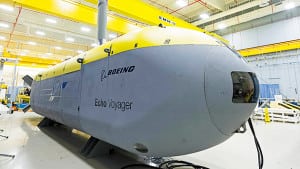
The Navy is planning to host a workshop in February with industry and academia to explore and better understand the state of unmanned undersea vehicle (UUV) system capabilities and identify areas for additional research. According to a request for information (RFI) released on Nov. 30, the Unmanned Maritime Systems program office (PMS 406) recently developed a list of desired autonomy capabilities for a large, long-endurance UUV “for which there is a need for further research and development of novel solutions.”…

 By
By 











